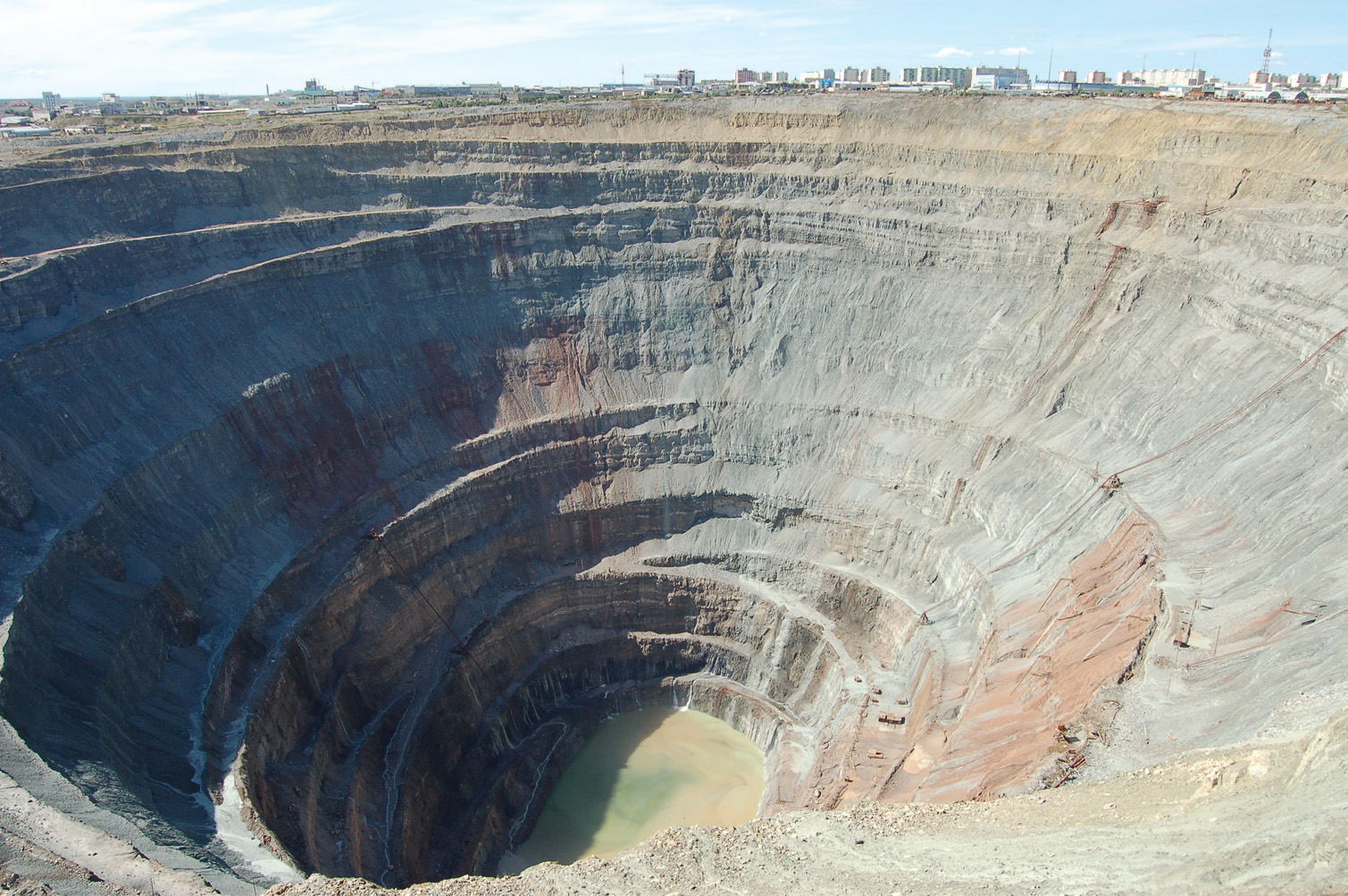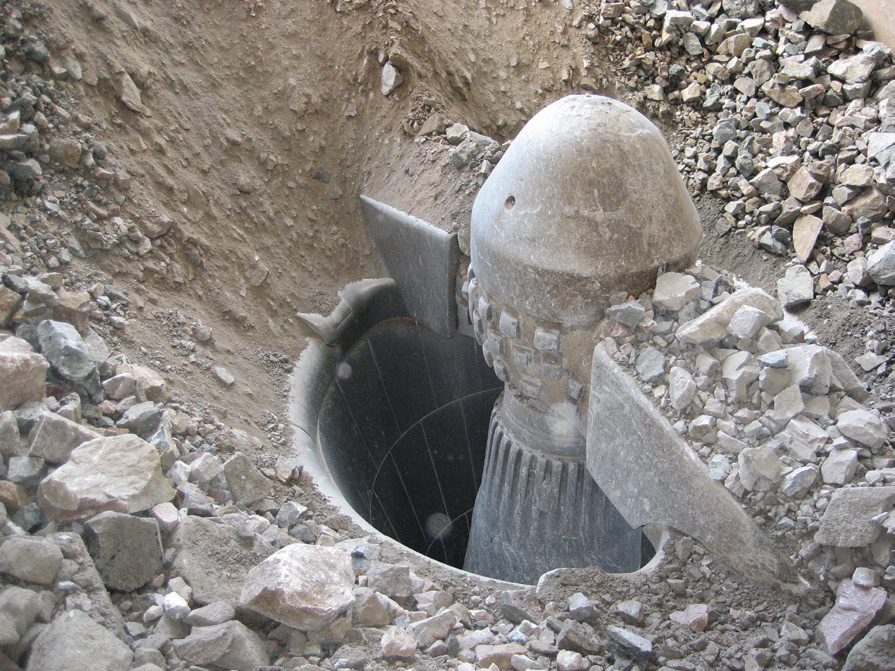Mining

Map of active metal and energy minerals mining sites.
Source: SNL Metals & Mining Database, 2017.
Large-scale physical and chemical land disturbance
Mineral extraction and land degradation
Although the mining and minerals sector forms a relatively small part of the global economy, it is very diverse (producing over 80 mineral commodities), and underpins the world economy and the development of human societies. The major producer countries include Australia, Brazil, Canada, China, the EU, Russia, South Africa and the United States, although large-scale mining is increasingly shifting to developing countries1. An estimated 40 million people are involved in large-scale mining, representing 1 % of the world’s workforce, another 200–250 million people form an indirect workforce and a further 13 million are involved in artisanal small-scale mining. The environmental costs of mining are substantial. The United Nations Conference on Sustainable Development (June 2012, Rio de Janeiro) recognised the importance of mining, particularly to developing countries, and urged that the negative environmental and social impacts of mining be addressed. However, the stabilisation and restoration of abandoned mining sites typically require long-term efforts focused not only on local site conditions but also on adjacent waste-disposal sites, neighbouring areas affected by water pollution, distant areas affected by dust emissions and infrastructure (e.g. roads and railways). How to resolve the inherent conflict between the growing impacts of increased demand for mineral resources with the need to protect and restore environmental goods and services remains a major challenge.
It has been estimated that, in 2010, about 45 billion tonnes of raw material minerals were extracted worldwide; by 2030, this is expected to increase to 70 billion tonnes. Since most of the “richer” sites with high-grade mineral deposits have been mined, “poorer” sites (more rock, less mineral) must be reemployed. Recovering these resources requires the removal and disposal of far larger amounts of overburden material and waste rock, which has resulted in a global shift from restricted mine shafts that follow specific ore veins or enriched deposits, to large-scale open-pit mines. Such forms of extraction produce significant volumes of waste material, including tailings, which are mixtures of crushed rock and processing fluids from mills, washeries or concentrators that remain, minerals, mineral fuels and other potentially hazardous contaminants. This shift is driving a rapidly growing global footprint of mining industries.
Artisanal or small-scale subsistence mining presents another set of problems. This practice is widespread, especially in developing economies, and is often illicit and thus unregulated. It frequently results in high levels of disturbance and pollution, For instance, the uncontrolled use of cyanide and mercury in gold extraction leads to the pollution of soils, surface- and groundwater and exposes mine workers and local populations to severe health risks. In fact, artisanal mining is the world's largest source of mercury pollution.
Furthermore, there are endemic problems with abandoned and derelict mines, which represent a threat to the environment and public health. In general, there are three major types of residue problems:
- Production of large amounts of waste materials, or ‘spoils’, from mining of metals and coals. Usually gathered into large mounds on the land surface, the composition of these spoils is highly variable, although they often contain a mixture of chemically inert and reactive components.
- Production of reactive mineral wastes or ‘tailings’. Usually fine-grain deposits, tailings typically are rich in sulfide minerals, generating acid mine drainage and thus causing them to be of greater environmental concern than spoil heaps.
- Generation of acidic discharge waters that contain elevated concentrations of metals and metalloids.
While there is great uncertainty with regard to the worldwide extent of the legacy impacts of abandoned mines, there is little doubt they present serious risks. For example, the Government Accountability Office of the United States estimated in 2011 that, in 12 western States and Alaska, there were at least 161 000 abandoned hardrock mine sites. For 2003, estimates for Australia found that only approximately 24 % of mining-affected land was subject to preliminary rehabilitation, thus presenting a vast and potentially highly toxic “rehabilitation gap”. Similar dimensions have to be expected in other mining regions of the world.
Data for global estimation of the extent and land degradation impact of mining
Ample databases on global mining sites, mined commodities and produced volumes are compiled and regularly updated by national geological services, mining industries, associations and information services and are made widely available to the general public. Global satellite data archives that allow areas directly altered by mining to be mapped and to identify critical mineralogical anomalies indicating problems such as Acid Mine Drainage (AMD) are an important complement to the mining databases. The photographs illustrate the large dimension of land clearing and waste disposal of typical opencast coal mines (photos on the left page) and phorphyry copper-gold mines (photos above), which can be mapped and monitored by global satellite data. Combining the mining databases with remotely sensed spatial information can reveal, for example, that coal mines, followed by copper, gold and iron ore mines, contribute most substantially to the spatial dimension of land deterioration at global scales.
Mining life cycles and associated land degradation issues
Mining, compared to other land uses, occurs on a relatively limited land area estimated to be 0.3 to 0.6 % of the global ice-free land surface. However, its impacts are far reaching. Manifold land degradation issues are inevitably associated with different phases of mining, whether industrial or artisanal, with each phase having different environmental impacts.
Exploration and site preparation
Land clearing, including deforestation and large-scale removal of vegetation and soil cover is inevitable in the earliest preparatory phases of mining and typically expands over the operational lifetime of a mine. Immediate consequences are habitat fragmentation and destruction, biodiversity loss and disturbance of regulating ecosystem services such as water retention, filtering and soil erosion control.
Active operation
Once mining sites enter active mining operation, vast material extraction, movement and re-deposition of overburden, waste rock and commodity materials generate the most massive waste stream of all industries. At this stage typically a high water demand and use of chemicals for on-site mineral preprocessing, purification and concentration add significantly to the environmental burden of the mining operation on- and near-site. Deep excavation of overburden and ore removal requires lowering the water table in the wider mining area. This leads to the depletion, hydraulic disturbance and contamination of existing water resources, both surface- and groundwater, which poses a substantial threat to all ecosystems. Large volumes of water are directly consumed for mining operations and on-site mineral preprocessing such as flotation, leaching and coagulation and liquid dumping of residuals in tailings ponds. Hence modern mining has a substantial water footprint. For instance, the production of 1 kg of mined gold consumes an average of 691 cubic metres (691 000 litres) of water. It also involves the use of highly toxic substances such as cyanide and mercury, which brings high risk of accidental releases in toxic spills from operating mines. Beyond the immediate mine site, such spills can cause severe damage to humans and ecosystems even hundreds of kilometres downstream. The accumulation of waste materials can extend from hundreds up to several thousand hectares on a single industrial mining site. This threatens soils, freshwater bodies and vegetation in the wider surroundings of mine sites through dust generation, mechanical movement and water and wind erosion acting on waste heaps. Eroded sediments and dust, whether inert or toxic, can affect human health directly and lead to physical and chemical deterioration of downstream surface waters and sensitive ecosystems.
Post-operation
Once active mining ceases, mine facilities and the site must be reclaimed and closed with the aim of returning these lands to a stage that resembles, to some degree, the pre-mining conditions. In most cases this is only partially feasible. Until now, this has not been achieved, with vast numbers of abandoned mine sites leaving major pollution legacies. A primary issue is acid mine drainage (AMD). In an active mine, water is removed from the site through pumping to allow mining to proceed. Once closed, groundwater again migrates into the mine site. AMD is caused where sulphide minerals (primarily pyrite), common to most metal mines and coal deposits, react with water and oxygen to create sulphuric acid. This, in turn, dissolves sulphate salts and heavy metals from the waste rock heaps and tailings, creating AMD leachate. Once released into the environment, AMD is quite toxic to aquatic ecosystems and creates a contamination source that is essentially infinite. In 2010, alone in the western US, at least 33 000 sites were identified that had degraded the environment by contaminating surface water and groundwater or leaving arsenic-contaminated tailings piles. Hence, controlling AMD is one of the main strategic environmental issues challenging the mining industry and environmental protection authorities worldwide.
Socio-economic aspects of mining
Despite the substantial environmental costs, mining represents undoubted opportunities for national economic development. Since the 1990s, there has been an accelerated shift of mining activities from industrial countries of the Global North (including China), which represent the major part of global mineral demand, to developing countries of the Global South. This shift has led to a predominance of and dependency on mining exports in many countries with emerging economies. Not surprisingly, these are among those countries of the Global South that suffer most from land degradation and desertification. Hence, the environmental costs of developing primarily the mining sector in emerging economies may ultimately challenge the positive effects of economic growth. Nevertheless, recent analysis of 22 low- and lower middleincome mineral-rich countries reveals that they, in comparison to countries without mineral resources, have not only shown stronger growth in GDP since the year 2000 but have also achieved more substantial improvements in their Human Development Index (HDI), including clear progress in public education and health, although the HDI scores are still negatively impacted by social inequality. Societies have to deal with balancing economic gains through mining with other social, economic and cultural activities on the land, such as agriculture, forestry, livestock grazing, recreation and aesthetics, while retaining and respecting traditional societal and spiritual values. The risk of affecting these valuable activities and resources increases when there is a failure to build strong and transparent institutional frameworks to regulate the mining sector and to ensure good governance practice. When local land users and indigenous communities are only exposed to the burdens of mining but are not benefitting from its socio-economic gains, the potential for societal and economic conflict is high. The EU project Environmental Justice Organisations, Liabilities and Trade has identified several hundred mining conflicts globally where there has been a failure to consider environmental, economic, social and cultural impacts of mining investments in a participatory planning process. Recent proposals to mobilise the global mining sector within the implementation framework of the new Sustainable Development Goals (SDGs) urge and encourage mining companies of all sizes to fully incorporate this wider range of factors in their planning to enhance the sustainability of mining operations.
Globally, mining is expanding in response to societal demands for energy minerals (e.g. coal, uranium); metals (e.g. iron, copper, zinc); construction minerals (e.g. natural stone, aggregates, sand, gravel, gypsum) and industrial minerals (e.g. borates, carbonates, kaolin). Since the 1970s, extraction of metals increased by more than 75 %, non-metallic industrial minerals by 53 % and construction materials by 106 %. The global extent of land area impacted by mining and quarrying are debated, but recent estimates range between 300 000 and 800 000 km.














